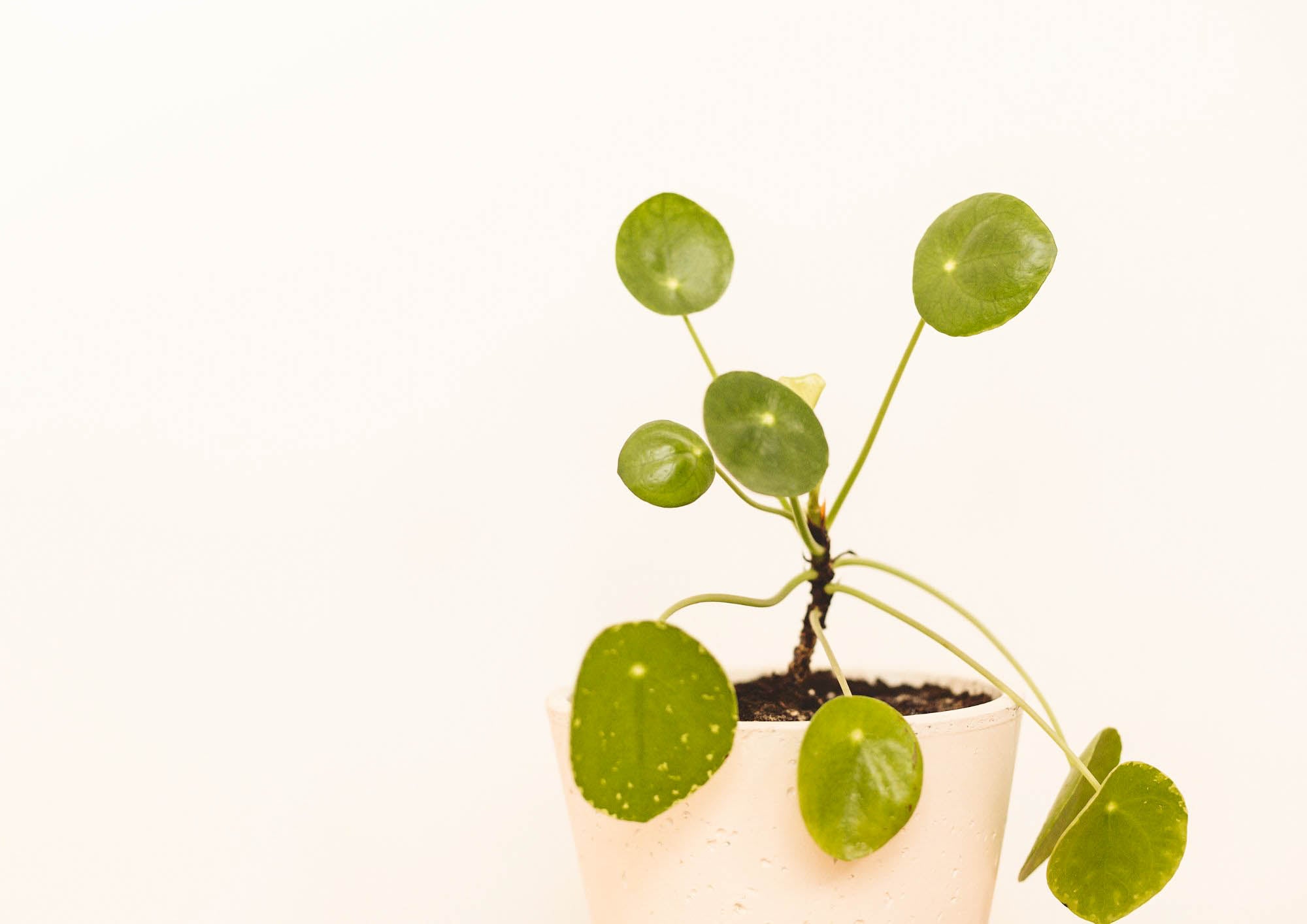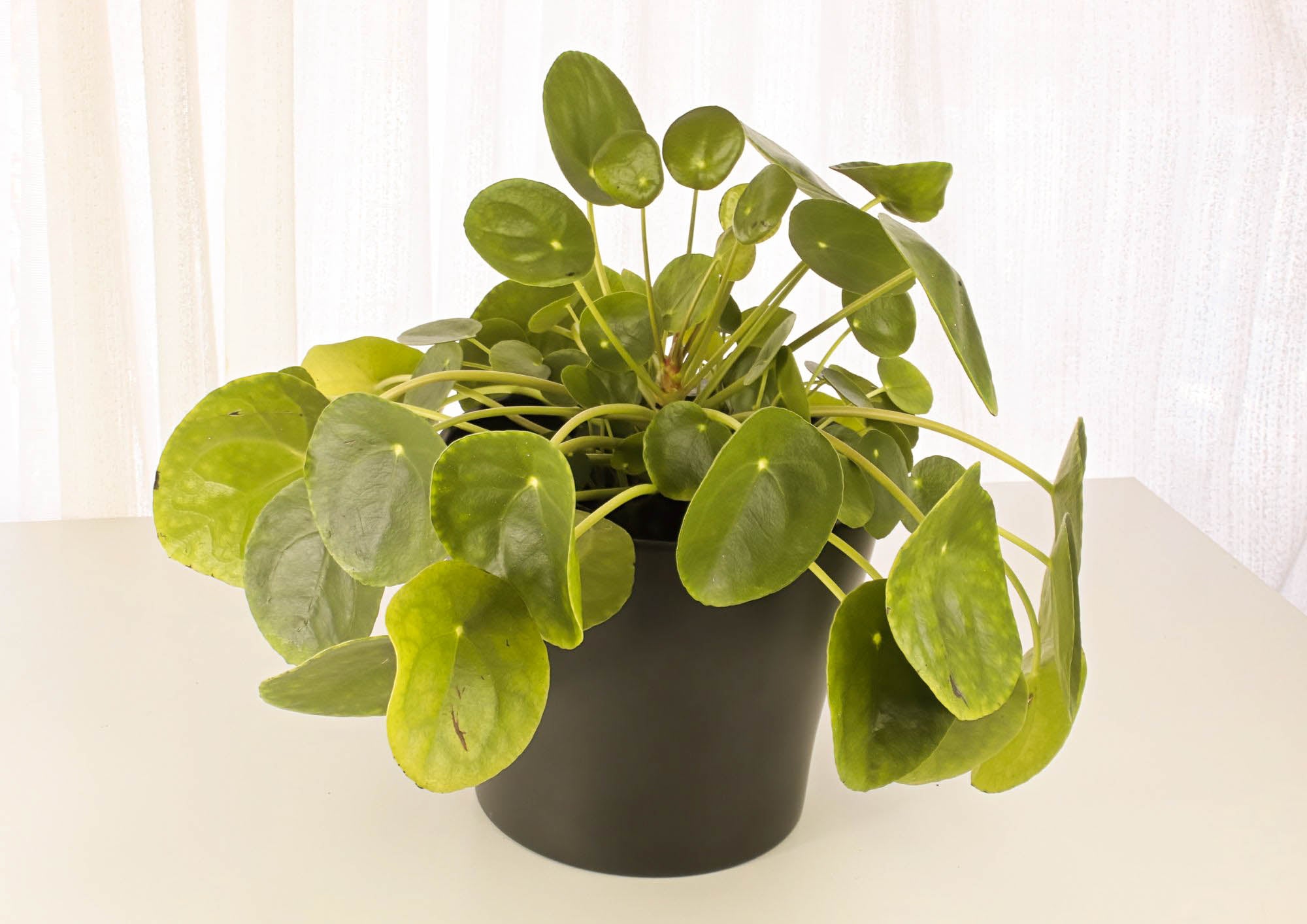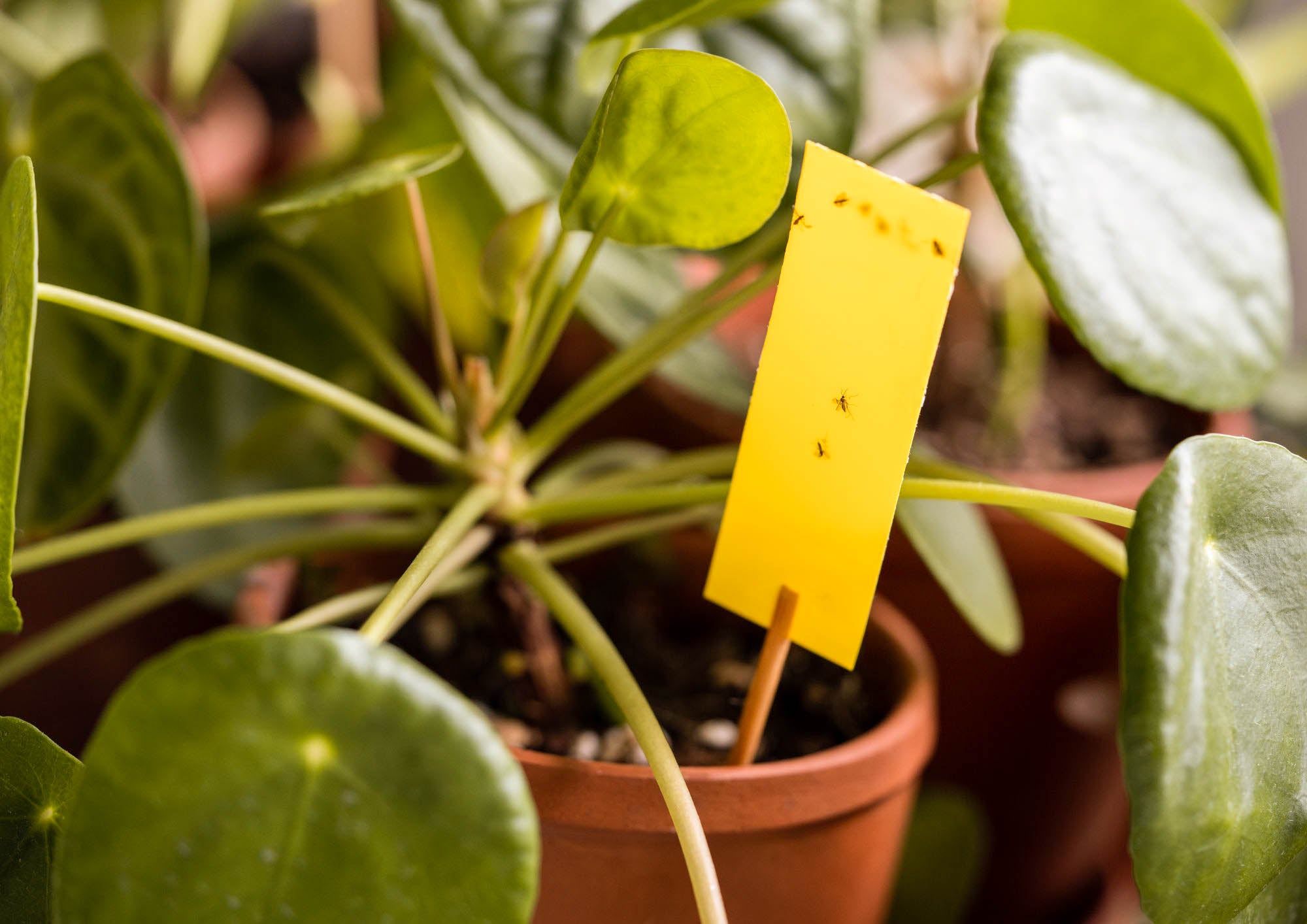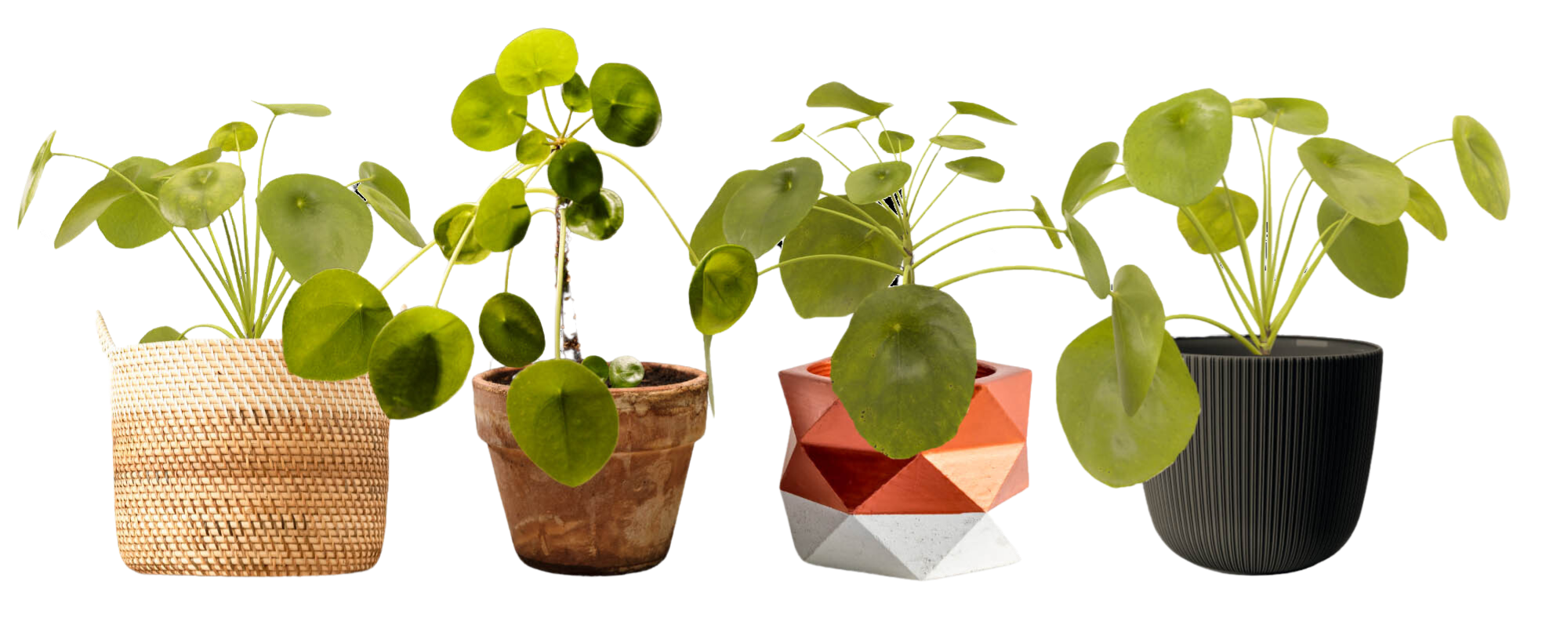Meet the Pilea peperomiodes, a delightful plant with quite the collection of names – from the affectionate "friendship plant" to the graceful "missionary plant," the whimsical "pancake plant," and the intriguing "UFO plant." Some of these names make perfect sense, while others makes for an eyebrow raise. In this blog, we’ll be taking a journey into the fascinating history of this plant and swap some stories about how to care for and style it.
History of the Chinese Money Plant

Picture this: a tale that spans continents, intertwining the threads of botanical discovery, friendship, and a touch of mystery – that's the history of the Chinese money plant or Pilea peperomioides.
In the early 1900s, a Norwegian missionary and plant lover named Agnar Espegren stumbled upon this charming plant in the Yunnan province of China. His new friends, the local farmers, gifted him a small cutting as a token of their newfound friendship.
Agnar shared this unique plant with a fellow missionary in Norway. From there, the Chinese money plant found itself on a journey of propagation and sharing. Its babies, affectionately known as "pups," made it easy to spread the green love. Cuttings were exchanged among friends and family, turning this plant into a symbol of shared joy and companionship.
As the 1940s and 1950s rolled in, the Chinese money plant started making waves in Western countries. Its distinctive round leaves and undeniable charm made it a sought-after houseplant. With time, it earned endearing names like the "friendship plant," highlighting its flair for bringing people together.
Fast forward to today, and the Chinese money plant has achieved cult status in the world of indoor gardening. Its minimalist aesthetic and fuss-free nature have made it a favourite of plant enthusiasts and interior decorators alike.
Ideal Conditions For Your Chinese Money Plant
Choosing the perfect spot for your Chinese money plant is vital. Most people who consider the Chinese money plant an “easy” plant, most likely has it placed in an ideal spot. Like many plants, it revels in bright, indirect light, creating an ideal environment for its vibrant growth.
Steer clear of direct sunlight, though, as the delicate leaves are prone to scorching. It's a balancing act – providing ample light without subjecting it to harsh rays.
While this resilient plant can tough it out in lower light conditions, bear in mind that it's basically making a deal with the devil. In low light, expect a more spaced-out arrangement of leaves, stunted growth, and a tendency to stretch and become leggy in its search for brighter spots.
Chinese Money Plant Care
Just like any living buddy, the Chinese Money Plant needs some love, and let me tell you, it's a bit of a commitment. So, let's get real and break down the care essentials. We'll dive into how much to water without drowning or dehydrating your plant, find the sweet spot for sunlight, figure out the perfect spot to place it, and make sure the temperature is just right—all in the quest to keep your Chinese Money Plant living its best life.
Watering the Chinese Money Plant

Getting the hang of watering your Chinese money plant can be a bit of a dance—it loves its water, but too much can spell trouble with root rot. The trick here is to give the top quarter of the soil some time to dry out before you go for the watering can, preventing any root-related drama. Remember, with this plant, it's all about "less is more" when it comes to watering. So, when you do water, go for a good soak, making sure all that excess water happily drains out of the nursery pot's holes before you tuck it back into its fancy pot. To really get in sync with your plant, tweak the watering routine based on what's happening indoors, like shifts in temperature and humidity.
Lighting Requirements for the Chinese Money Plant

Much like many other plants, the Chinese money plant thrives in bright, indirect light. Now, I get it—we plant enthusiasts throw around the term "indirect" a lot, and it might sound a tad cliché. But let me emphasize, when it comes to the Chinese money plant, we're dead serious about this. Exposing it to direct, harsh sunlight is a surefire way to scorch those delicate leaves you cherish.
Given its growth tendencies, regular rotation is key for your Chinese money plant. Neglecting this chore can lead to your plant leaning towards one side when producing new leaves, resulting in a somewhat lopsided appearance. So, give your green friend a spin every now and then to ensure its growth is symmetrical and your plant stays looking its absolute best.
Temperate Considerations for the Chinese Money Plant

The Chinese Money tree isn't overly particular about temperature, but it does tend to thrive in room temperature conditions. As long as there aren't sudden drops that are too drastic, the plant should fare well. Consider your own comfort—if you're feeling uncomfortably cold, it's a good indicator that your plant might be experiencing the same. Maintain a comfortable environment, and both you and your Chinese Money tree will be content.
Troubleshooting the Chinese Money Plant
When you're taking care of your Chinese money plant, you're likely to hit a few bumps in the road, just like with any plant. But hey, think of these issues as little signals – they're basically your plant's way of telling you what it needs. And the good news? There's almost always a fix for whatever comes up. So, don't stress too much, see it as a chance to learn and fine-tune your plant parenting skills, and your Chinese money plant will keep on thriving.
Yellowing Leaves

- Issue: Yellow leaves can be a sign of overwatering or poor drainage.
- Solution: Allow the top three centimeters of soil to dry out before watering, and ensure the pot has drainage holes to prevent waterlogging.
Leaf Curling

- Issue: Curling leaves may indicate underwatering or exposure to direct sunlight.
- Solution: Ensure the plant receives adequate water when the topsoil is dry, and move it to a spot with bright, indirect light.
Root Rot
- Issue: Root rot can occur due to overwatering and poor drainage.
- Solution: Adjust the watering frequency, let the soil dry between waterings, and ensure proper drainage by using well-draining soil and a pot with drainage holes.
Leggy Growth

- Issue: Sparse, leggy growth may result from inadequate light conditions.
- Solution: Place the plant in a location with bright, indirect light, and consider rotating it regularly to encourage even growth.
Drooping Leaves

- Issue: This may be a sign of underwatering or excessive dryness.
- Solution: Water the plant thoroughly when the topsoil is dry, and consider increasing humidity around the plant by misting or using a humidity tray.
Pests

- Issue: Common pests like spider mites or aphids may infest the plant.
- Solution: Regularly inspect the plant for pests, and treat infestations with insecticidal soap or neem oil.
Brown Leaf Edges

- Issue: Brown edges can be caused by dry air or inconsistent watering.
- Solution: Increase humidity by misting the plant, placing a humidifier nearby, or using a humidity tray. Maintain a consistent watering schedule.
Propagating the Chinese Money Plant

The ease of propagation is what makes the Chinese money plant one of my absolute favourite plants. Not only is it such a great return on your investment, but it means that you’ll always have a backup gift ready for a friend.
You’ll notice that your Chinese money plants spawn a bunch of baby plants around the mother plant. These baby plants are called “pups” and are what makes the plant so easy to propagate.
With your reliable and clean gardening shears, carefully snip the stem of a well-established pup, making sure it has attained a respectable height of a few centimeters. Immerse the cutting in water and practice a bit of patience; luckily, this plant is a breeze to propagate, with roots emerging in just a matter of days.
Once the roots reach a length of at least 4cm, gently transition the plant from its aquatic abode to fresh potting soil with excellent drainage. There you have it! Before you know it, that pup will transform into a thriving mama plant, ready to gift you with a new set of pups, starting the delightful cycle all over again.
Styling Your Space with the Chinese Money Plant
Let's dive into the fascinating link between the Chinese Money Plant and the ancient art of Feng Shui—it's a connection that goes beyond mere coincidence. The Chinese Money Plant, with its name as the first clue, is intricately woven into the principles of Feng Shui, an age-old Chinese practice centered around how you arrange things in your space to influence the energy flow, or "chi."
Picture Feng Shui as this insightful guide to placing items in your home strategically, believing that where you put things can seriously shake up the energy vibes. Now, regardless of whether you're all in on Feng Shui or just admire it from a distance, there's something sensible about incorporating its wisdom when it comes to the Chinese Money Plant.
As you might guess, the Money Plant isn't just a random name. In the Feng Shui playbook, it's suggested to cozy it up in the southeastern nook of a room to draw in that good old wealth and abundance. So, whether you're fully embracing the mystical side of Feng Shui or simply want to jazz up your space with positive vibes, giving your Chinese Money Plant a prime spot could be a delightful touch of intentionality.
Table Center Piece

With its captivating radial symmetry, the Chinese Money Plant effortlessly claims its spot as the centerpiece, be it on a coffee table, a kitchen island, or an entrance console table. But here's the trick: make sure to give it a little spin regularly. By rotating your Chinese Money Plant, you prevent it from playing favorites with one side when sprouting new leaves, steering clear of any awkward lopsidedness.
Textured Planters

Given the smooth and glossy texture of their leaves, I'm naturally drawn to play with contrast when choosing a planter for Chinese Money Plants. Opting for a textured touch adds visual intrigue—a wicker basket, a rugged terracotta or cement pot, or perhaps a ceramic one boasting intricate details can work wonders in creating that perfect balance.
Hanging Planters

While the Chinese Money Plant isn't your typical trailing plant that you'll usually add to a hanging planter, don't exclude it when choosing a planter. Why, you ask? Well, these little guys are hard-core sun-seekers, and the higher they are in a space, the happier they get soaking up all that natural light.
Geometric Planters

The standout feature of the Chinese Money Plant? Those flawlessly round leaves steal the show. To enhance this geometric beauty, go for a planter with a touch of geometry. It's an instant way to give your plant a modern vibe, perfect if you're aiming for that contemporary look.
I hope you've picked up some valuable info on the Chinese money plant and feel inspired to start your own collection, whether it's to satisfy your love of collecting or to share with friends. Just remember to give them the care they need—enough natural light and water to keep them healthy and thriving.





